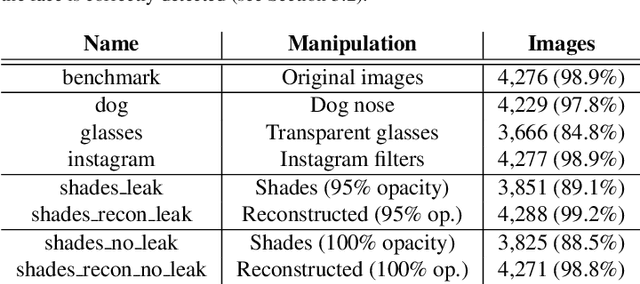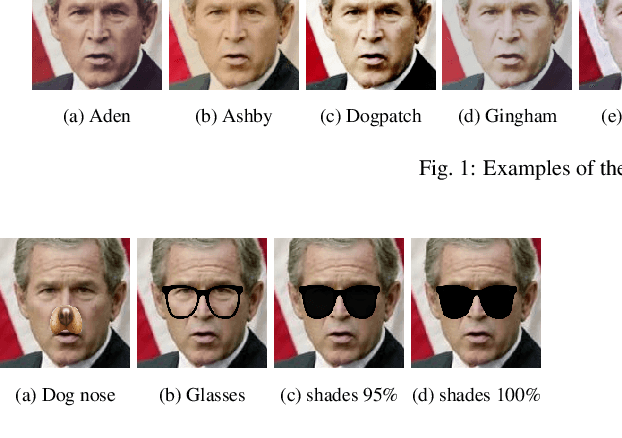On the Effect of Selfie Beautification Filters on Face Detection and Recognition
Paper and Code
Oct 20, 2021



Beautification and augmented reality filters are very popular in applications that use selfie images captured with smartphones or personal devices. However, they can distort or modify biometric features, severely affecting the capability of recognizing individuals' identity or even detecting the face. Accordingly, we address the effect of such filters on the accuracy of automated face detection and recognition. The social media image filters studied either modify the image contrast or illumination or occlude parts of the face with for example artificial glasses or animal noses. We observe that the effect of some of these filters is harmful both to face detection and identity recognition, specially if they obfuscate the eye or (to a lesser extent) the nose. To counteract such effect, we develop a method to reconstruct the applied manipulation with a modified version of the U-NET segmentation network. This is observed to contribute to a better face detection and recognition accuracy. From a recognition perspective, we employ distance measures and trained machine learning algorithms applied to features extracted using a ResNet-34 network trained to recognize faces. We also evaluate if incorporating filtered images to the training set of machine learning approaches are beneficial for identity recognition. Our results show good recognition when filters do not occlude important landmarks, specially the eyes (identification accuracy >99%, EER<2%). The combined effect of the proposed approaches also allow to mitigate the effect produced by filters that occlude parts of the face, achieving an identification accuracy of >92% with the majority of perturbations evaluated, and an EER <8%. Although there is room for improvement, when neither U-NET reconstruction nor training with filtered images is applied, the accuracy with filters that severely occlude the eye is <72% (identification) and >12% (EER)
 Add to Chrome
Add to Chrome Add to Firefox
Add to Firefox Add to Edge
Add to Edge